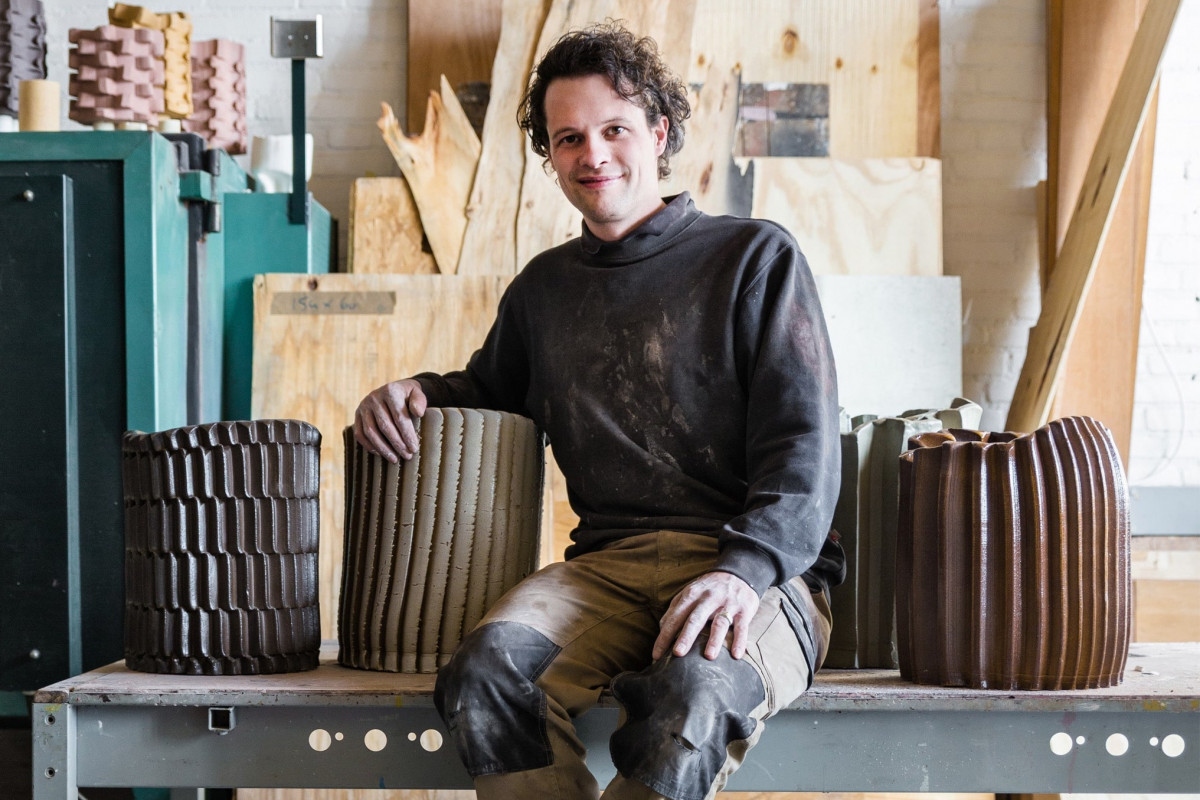
Constructively Restless
It is every artist’s prerogative to court a certain kind of discomfort. A perpetual state of unease that engenders momentum and forestalls inertia. Coming less from external production demands and more from the instinct to learn and grow, this inclination towards the unknown is essential to the exploratory nature of making things.
Floris Wubben thrives under these circumstances. Forever establishing and moving through its own outer limits, his ceramic practice is a highly kinetic endeavor. Always moving, testing and striving, Wubben’s studio produces ambitious work that is always jumping for higher plateaus without concerning itself with landing.
Nevertheless, it lands exceptionally well. In these objects we see the hand of the expert guided by the curious eye of the newcomer; highly informed works of art, driven by intuition. It’s as though they are ephemeral to the search that created them. They are exercises in possibility with motivations both subtle and extravagant.
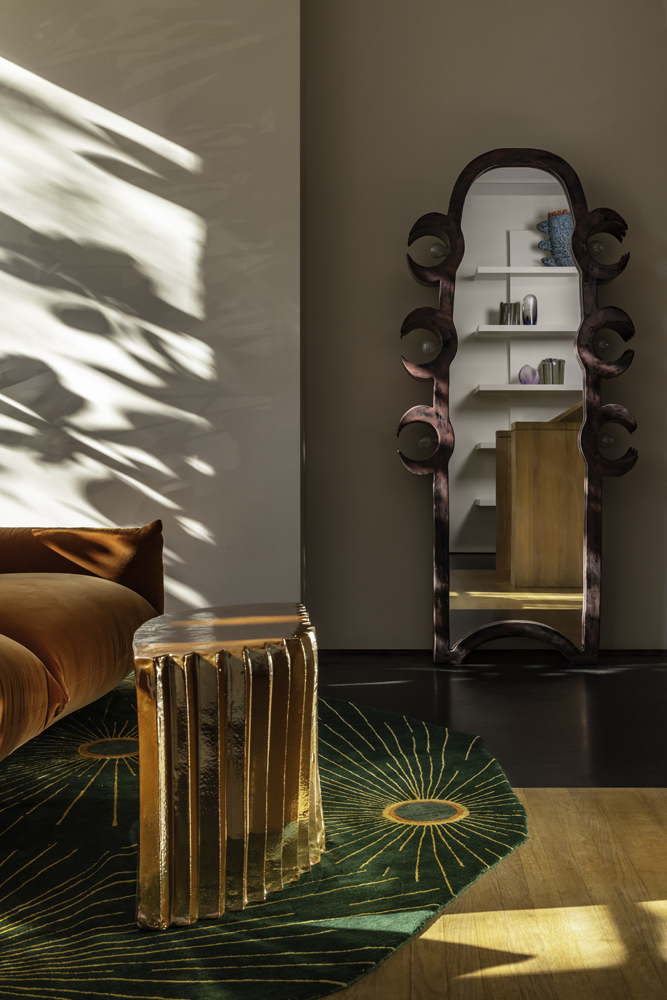
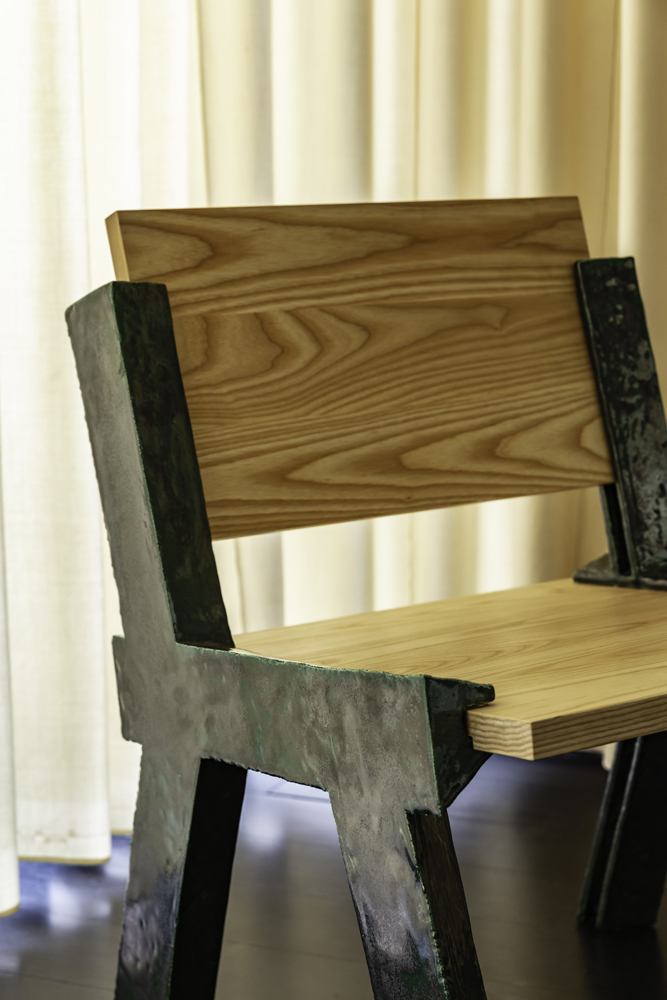
"I made The Standing Mirror because I wanted the lamp bulbs to collaborate with the ornaments of my extrusions. I went to a lighting store, where I saw a variety of lightbulbs, and it made me think about my extrusions. I started to think about combining the two elements."
“With the new exhibition, we pushed everything to the limit,” Wubben says of his 2020 body of work for The Future Perfect. Stretching the parameters of his oeuvre into previously uncharted territories, involving new understandings of scale and surface, these most recent pieces capture the excitement of an artist flirting with the unknown. They are living documents of a dialogue with process, as Wubben sprints through familiar modes of production and into exciting new techniques.
Two pieces from this collection, The Standing Mirror and The Tulip Lamp, are bold and extravagant forays into sculptural lighting. Of the former, he says: "I made The Standing Mirror because I wanted the lamp bulbs to collaborate with the ornaments of my extrusions. I went to a lighting store, where I saw a variety of lightbulbs, and it made me think about my extrusions. I started to think about combining the two elements. In the mirror, you can see that the light from the lightbulb is creating a nice shade on the wall because of the extruded shape."
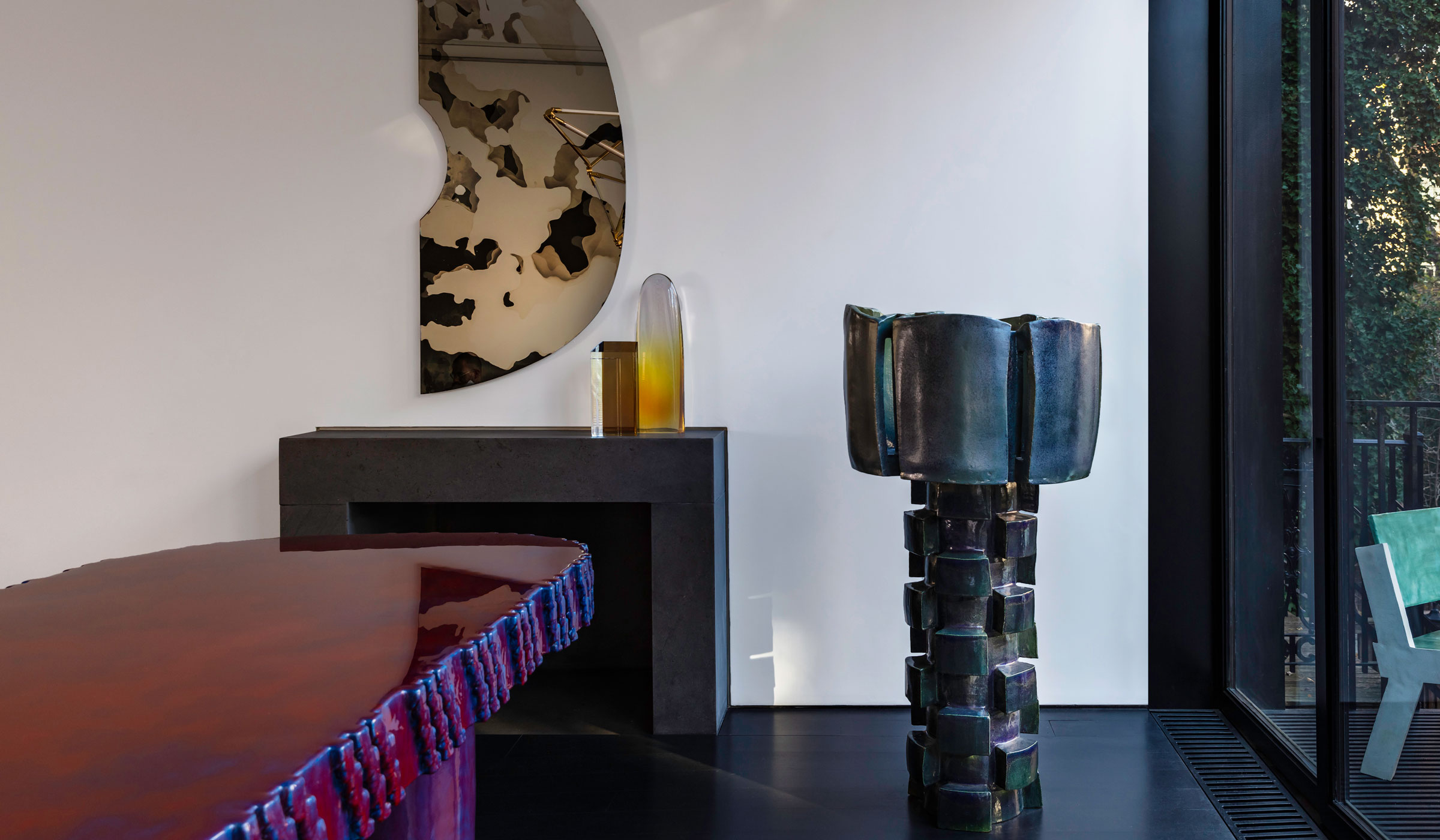
After making the base, we were searching for the right lampshade. This took a while, because the idea (at first) was to create a textile lampshade. After seeing different options I decided to make the shade from ceramic as well. This took a long time and complicated many logistical aspects of showing the piece. After putting it all together I knew it was the right decision."
This approach to harnessing light as a physical dimension, combining the extrusion process, the bulbs and the cast shadows into a single, forthright sculptural element is a natural extension of Floris’ practice. His extruded ceramics have long inhabited the character of something pulled from a greater depth of meaning. His way of shaping clay intones a poetic inevitability of matter; a commentary on the shapes embedded in everything that surrounds us.
We might call his continuing practice a conceptual counterpoint to this extrusive approach. He pushes his ideas through their own making, re-imagining them as they continue to materialize. It’s a frenetic and animated way of communicating with his own work, a way to keep things exciting.
The Tulip Lamp is an example of this. He says: "This is a design that was realized through its making. After making the base, we were searching for the right lampshade. This took a while, because the idea (at first) was to create a textile lampshade. After seeing different options I decided to make the shade from ceramic as well. This took a long time and complicated many logistical aspects of showing the piece. After putting it all together I knew it was the right decision."
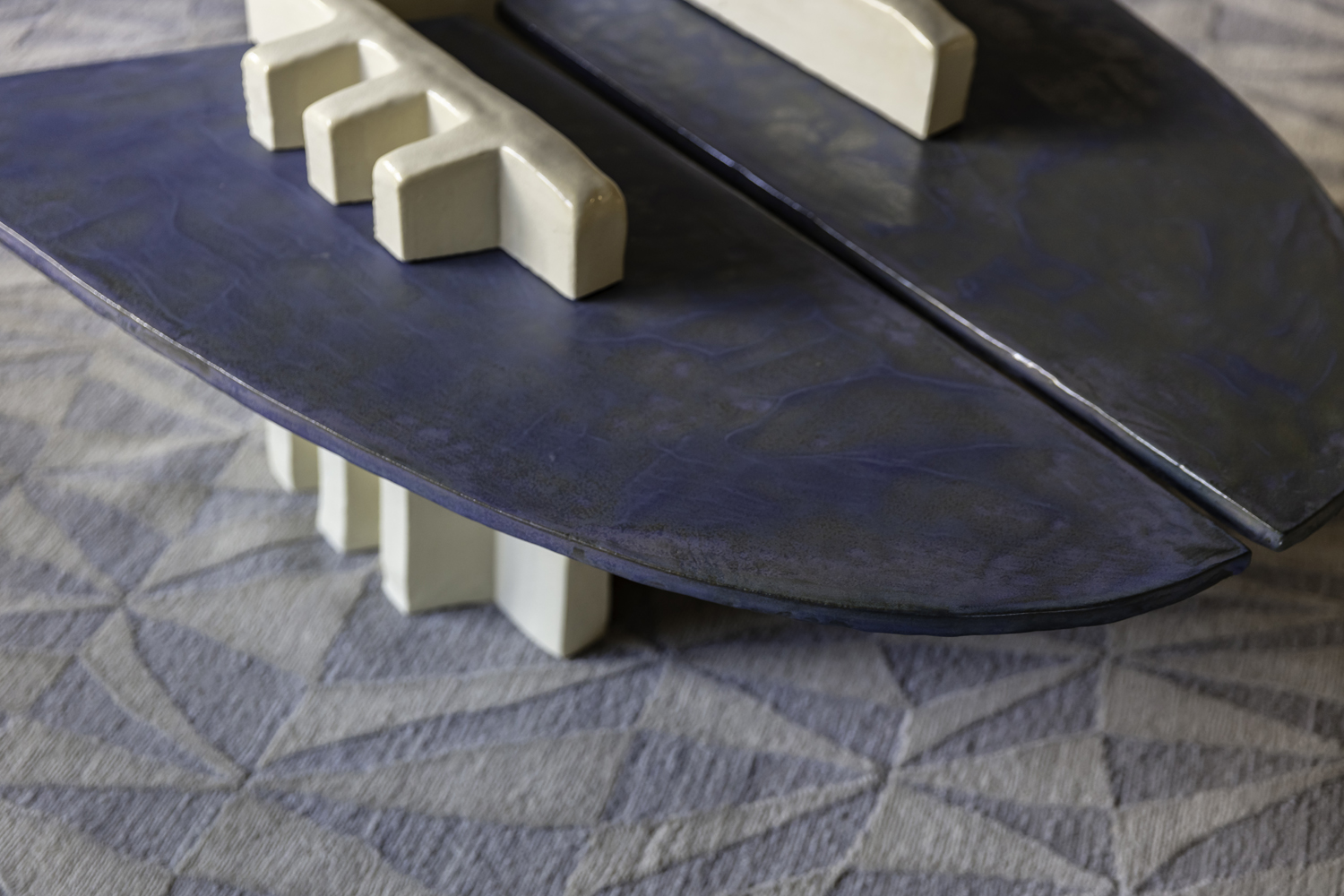
The finished lamp is a stunning example of how Floris’ courageous and extemporaneous approach to design produces challenging and unexpected results. To him, however, the results are somewhat tangential. As an artist, Wubben lives and thrives in the act of pushing boundaries. “When someone says to me that something isn’t possible, that’s when I want to do it,” he says. “[In ceramics] there are so many boundaries - that’s why ceramics are usually so small. You step over the boundary and you’re looking for new things. You’re never satisfied.”
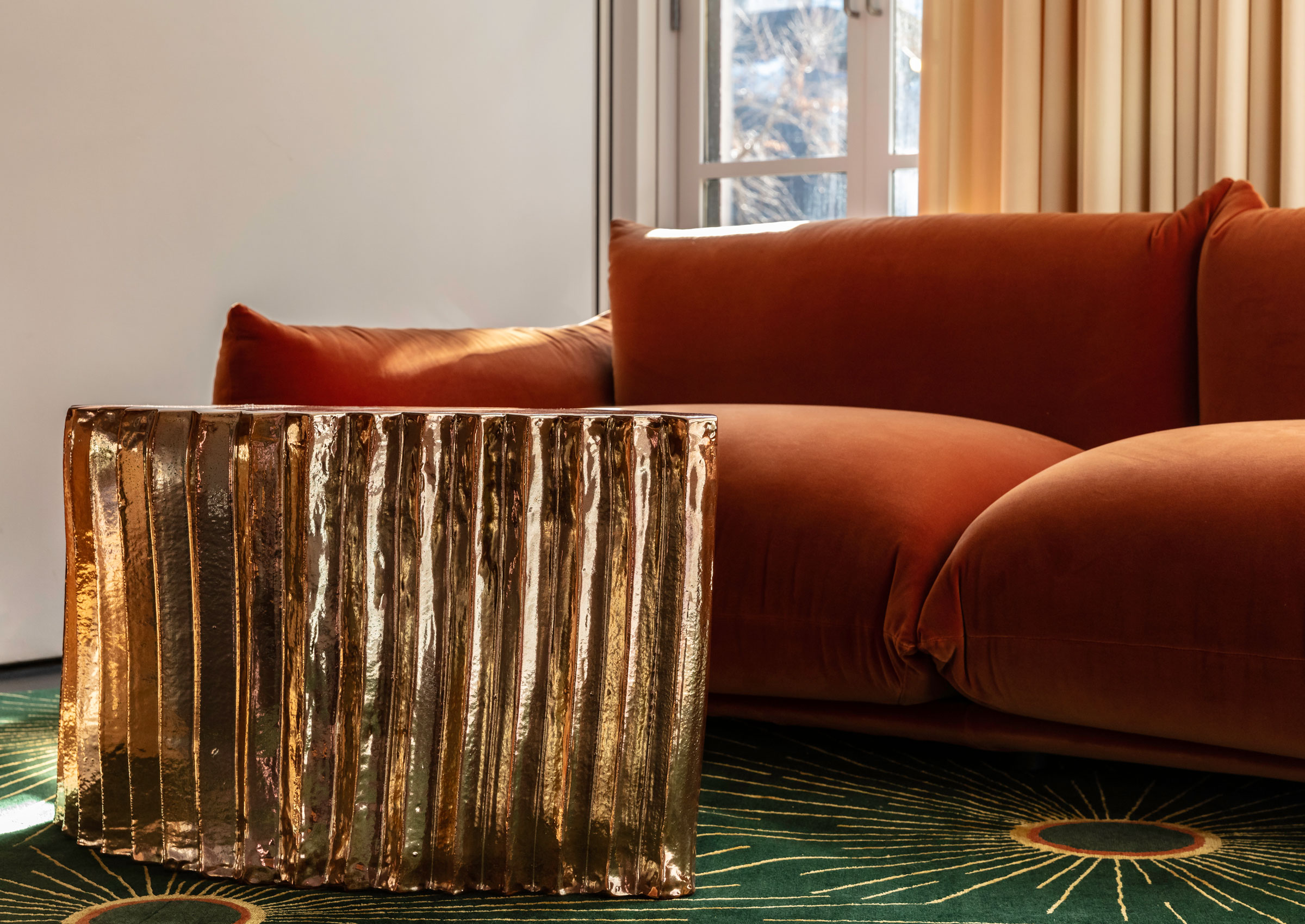
 The Future Perfect
The Future Perfect